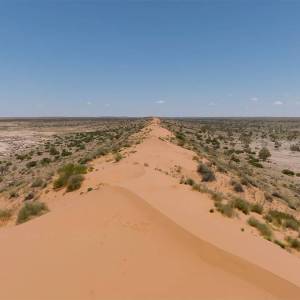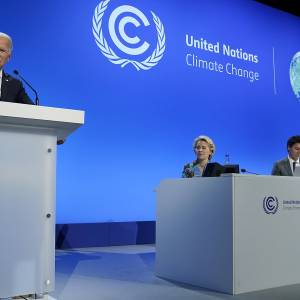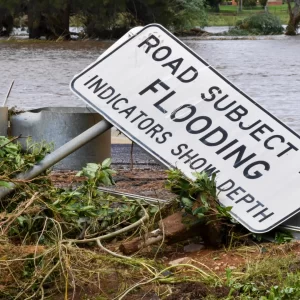
Climate change litigation in Australia and the Public interest test
The first examples of Australian courts beginning to discuss climate change as a factor which needed to be considered within public interest tests were Grey v Minister for Planning (2006) and Minister for Planning v Walker (2008). Most notably, in 2017, the case of Gloucester in the NSW Land and Environment Court found that ‘… the time has come that the principles of ESD [environmentally sustainable development] principles can now be seen as so plainly an element of the public interest’. While this may have appeared to be a substantial step forward, Coast and Country demonstrated that public interest in climate change can be overridden by dubious findings of fact – namely that courts will not hold coal mines accountable for their Scope 3 emissions as ‘…the same quantity of coal would still be extracted from other mines and burned at overseas power stations, and hence, there would be no difference in the amount of Scope 3 emissions produced’. Following these cases, it appeared that the trend in Australian climate change litigation was for courts to prioritise private economic interests over the public interest in mitigating climate change. However, 2021 saw several successful climate change cases – namely Sharma and Bushfires Survivors for Climate Action Incorporated – that may indicate a shift in the court’s treatment of climate change.
The public interest test in Queensland: mining objection hearings
Queensland has two main uses of a ‘public interest test’. One is for mining objection hearings and the other is for Environmental Impact Statements. The issue of mining is one of the most heated areas of climate action, with the opening of new mines usually being strongly opposed by activists.
The Land Court must conduct a Mining Objection Hearing (MOH) if there is an objection to an application for a mining claim, a mining lease, or an associated environmental authority. A MOH is part of the decision-making process and precedes the final decision. It is not an appeal from nor a judicial review of a decision already made. After hearing the objections, the Court makes a non-binding recommendation to the decision-maker. Separate Acts govern different approvals and the Court must take into account different statutory criteria depending on the type of approval. For a mining lease, the Mineral Resources Act 1989 applies. For an environmental authority, the Environment Protection Act 1994 applies. The focus of the EP Act is environmental, while the MRA has other criteria relating to the mineralization and viability.
Under the EP Act, the Land Court must take into consideration the ‘standard criteria’ when considering MOHs. The ‘public interest’ is one element of the ‘standard criteria’. The Act states that the ‘public interest’ shall be taken into account when considering an MOH. In Xstrata (2013), Court President Carmel MacDonald accepted that climate change is clearly a matter of general public interest and that greenhouse gas emissions may militate against the grant of a mining lease. She also accepted it might be a good reason for refusal.
Importantly, it is currently uncertain whether Scope 3 indirect emissions can be taken into account when considering the public interest under an MOH. Recently, in New Acland Coal v Smith (2018), Justice Bowskill opined that, under the EP Act, ‘broader considerations may be appropriate in considering “the public interest” as a component of the standard criteria. President Kingham states that there is still some room to argue the Court must take into account Scope 3 emissions when dealing with an objection to an environmental authority.
The public interest test in Queensland: Environmental Impact Statements
Any party who wishes to engage in a resource project will complete an Environmental Impact Statement under the Environmental Protection Act 1994 – if it has volunteered to do so, or if the chief executive of the Department of Environment and Science has required one be completed. Proposed large mining and petroleum projects are required to prepare an environmental impact statement (EIS) before an application for an environmental authority or resource authority can be issued.
When considering whether or not to require a project proponent to undertake an EIS, the chief executive must consider the ‘standard criteria’. One consideration in this ‘standard criteria’ is the public interest. Moreover, if a project would ‘involve a high level of public interest’, a decision may be made to require an EIS. Once a project proponent is preparing an EIS, the act outlines when a ‘public interest evaluation’ must be conducted and describes the various considerations that one must consider when conducting a public interest evaluation. The department will then decide if the EIS is adequate. If so, the Department prepares and gives EIS assessment report to the proponent and publishes the report.
The public interest test in New South Wales
In NSW, development assessments must consider the ‘public interest’ when deciding to approve projects under the Environmental Protection and Planning Act 1979.
The Environmental Planning and Assessment Act 1979 is the primary land use planning statute in NSW. It governs matters such as planning administration, planning instruments, development assessments, building certification, infrastructure finance, appeals and enforcement. It specifies that the ‘public interest’ is to be taken into consideration and has increasingly been relied upon by the courts as a gateway for climate change considerations in planning and development assessment processes.
The courts have shown little interest in using public interest tests to consider climate change and had instead weighed private economic interests as more important (with particular reference to cases Grey, Walker and Gloucester). However, the judgement in 253 Spit Road Pty Ltd v Mosman Municipal Council (2016) showed that the presence of a secondary planning instrument (in this case, the State Environmental Planning Policy Sydney Regional Environmental Plan (Sydney Harbour Catchment)) with clear, strongly worded aims and objectives to protect the public interest can result in courts interpreting the EPA Act to prioritize public good over private good.
International climate change litigation
Successful international climate change litigation includes the case of Urgenda (2019), where the Dutch government was held to have breached their duty of care to Dutch citizens by not lowering emissions by a substantial amount. In Ashgur , the Pakistan government was held to have breached fundamental human rights by taking too long in implementing their National Climate Change Policy. In the 2017 case of Third Runway at Vienna International Airport , the courts used a public interest test to determine the construction and operation of a third runway at the Vienna international airport would be contrary to the public interest in environmental and climate protection.
While explicit mention of a public interest test being used was difficult to find, it is evident that a common theme within all successful cases was that the courts were seeking to protect fundamental human rights. In particular, Peel and Osofsky’s 2017 Transnational Environmental Law article – ‘A Rights Turn in Climate Change Litigation?’ – notes that
given the coincidence of available environmental rights protection with procedures that enable rights claims and judiciaries willing to entertain them, the prospects for rights-based climate change lawsuits look bright. In other jurisdictions – notably the US, in which traditional, statutory-based climate cases have dominated – rights claims in climate change cases face a much harder road.
The comment being made here is that countries with constitutionally protected human rights, such as the right to life and right to a healthy environment, have seen more consistently successful climate change litigation.
The future of climate litigation in Australia
The conclusion for Australia, therefore, is that climate change litigants have a tough road ahead given our lack of constitutional protection for human or environmental rights. If we are to learn anything from international cases, it is that attempting to implement such protections, perhaps by starting at a state level, will be an important step forward. Importantly, Sharma and Bushfires both demonstrated that courts are becomingly increasingly receptive to ensuring that authorities are held responsible for protecting the public from climate change. Sharma succeeded on a tortious negligence basis where the government was held to owe a duty of care to children who will be affected by climate change and Bushfires held that the Environmental Protection Authority had failed its legislative duty to protect the environment by not implementing a more comprehensive climate change policy. Notably, both of these cases did not succeed on rights-based claims and this may indicate that Australian courts are more receptive to tortious and legislative based duty climate change litigation.






